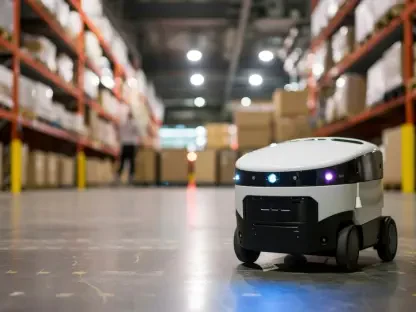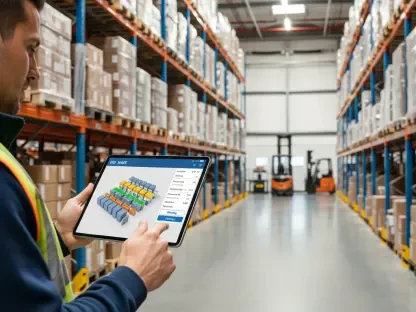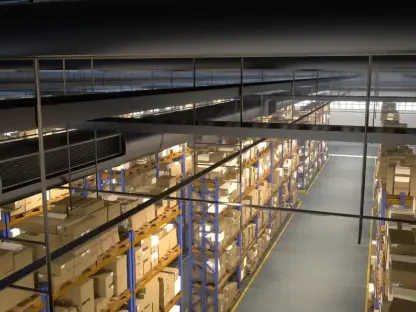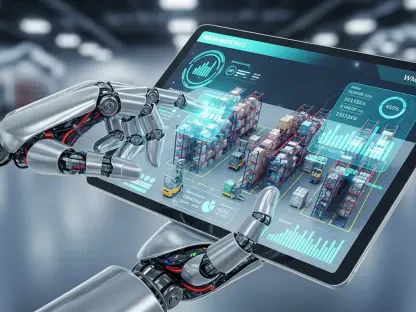In today’s rapidly evolving automotive sector, digitalization has emerged as a critical driver for enhancing supply chain efficiency and innovation. In a conversation with Rohit Laila, a seasoned expert with decades of experience in logistics and supply chain management, we delve into the nuances of digital transformation in the industry. With a keen interest in technology and innovation, Rohit offers compelling insights on how companies are leveraging digital tools to overcome complex challenges, drive collaboration, and ensure data quality.
What specific digital technologies is GM implementing, and how do these benefit both the company and its partners in the supply chain?
GM is investing in advanced digital technologies to foster collaboration with its partners, focusing on the transition to electric vehicles. By leveraging innovations like electric-powered freight solutions, GM is tackling the logistical challenges of transporting heavier EVs. These technologies not only streamline operations but also enhance partnerships, ensuring both GM and its partners are equipped to navigate industry transformations efficiently.
Can you elaborate on how the increased weight of EVs presents challenges in logistics, and what solutions are being explored to address these?
The increased weight of EVs poses significant challenges for logistics due to limitations in traditional transport systems. To address these issues, companies are exploring electric-powered freight solutions that could support the efficient movement of heavier loads. By investing in these innovative solutions, the automotive industry is preparing to manage the logistical demands of widespread EV integration.
How does Infineon Technologies use digital platforms to encourage collaboration and standardization within the supply chain?
At Infineon Technologies, digital platforms play a vital role in championing collaboration and standardization. The use of technologies like blockchain aids in streamlining operations and reducing lead times through standardized processes. These platforms facilitate sharing of data and best practices, ensuring a more agile supply chain capable of meeting market demands efficiently.
Why is the standardization of processes critical to creating an agile and responsive supply chain?
Standardization is crucial because it simplifies processes and reduces variability, enabling supply chains to respond swiftly to changes in demand or disruptions. When processes are standardized, companies can more easily implement best practices, utilize data insights, and collaborate seamlessly with partners, resulting in a more agile and efficient operation.
Todd Myers from Nissan mentioned data-led approaches to combat disruption. What key performance metrics does Nissan focus on, and how do they enhance the company’s logistics strategy?
Nissan focuses on performance metrics like free cash flow, total delivered cost, and cost per unit to shape logistical strategies. These metrics provide actionable insights that guide operations, ensuring decisions enhance overall business revenue. By continuously optimizing these aspects, Nissan is better equipped to handle disruptions within its supply chain.
What role do visualization and simulation platforms play in Nissan’s approach to mitigating supply chain disruptions?
Visualization and simulation platforms like Tableau and CPLEX are instrumental for Nissan. These tools allow logistics teams to visualize and simulate various scenarios, enabling continuous optimization. This ongoing adaptability helps minimize disruption impacts, allowing the supply chain to pivot quickly in response to unforeseen events.
John Torres from Mercedes-Benz emphasized data quality. What steps does Mercedes-Benz take to ensure data completeness and transparency, and why is this important for digital strategies?
Mercedes-Benz prioritizes data quality by establishing thorough data governance frameworks, emphasizing data completeness and transparency. These steps ensure reliable, actionable insights are available across the organization. High-quality data allows for efficient collaboration and accurate forecasting, which are essential for effective digital strategies.
How does Amy Paulsen at GM balance the introduction of new digital technologies with the human element in the EV space?
Amy Paulsen advocates for a balanced approach, recognizing the importance of human effort alongside technological advancement. While digital tools like AI and machine learning are crucial for automating processes, she stresses the need to support the teams behind these efforts, ensuring technology complements human intelligence rather than replacing it.
Can you give an example of how AI and machine learning tools have strengthened GM’s network design for EV logistics?
GM has leveraged AI and machine learning to optimize the network design for EV logistics. These technologies analyze complex data to suggest different loading points, carriers, and routing options, enhancing efficiency. This strategic use of digital tools has been pivotal in GM’s ability to adapt swiftly to logistical challenges.
What digital strategies does Volkswagen Group of America employ to navigate tariffs, and how do these improve data sharing and decision-making?
Volkswagen Group of America uses streamlined data sharing strategies and automated reporting to navigate tariffs effectively. These digital tools ensure that logistics plans are quickly adjusted, improving decision-making processes. The consistency and accuracy of data lead to more informed, agile responses to tariff-related disruptions.
Fabian Pobantz from Schaeffler discussed AI’s role in supply chain unpredictability. What shift in mindset does he suggest for implementing AI effectively?
Fabian Pobantz suggests shifting focus from basic AI discussions to understanding its maturity and applications in different business facets. By pinpointing specific supply chain pain points, companies can implement AI solutions that are more granular and effective, allowing them to counter unpredictability with precise strategies.
How does Schaeffler determine the main pain points in its supply chain to address them with digital solutions?
Schaeffler identifies supply chain pain points by examining each division’s unique priorities. By understanding the specifics of each challenge, Schaeffler can apply digital solutions that are tailored to these complexities, thereby enhancing the effectiveness of their overall digital strategy and mitigating potential disruptions.
Carolin Richter at BMW mentioned generative AI in robotics. How does BMW utilize AI to automate tasks that were previously considered impossible due to cost?
BMW harnesses generative AI to streamline robotics operations, automating tasks that were once unfeasible due to cost. By eliminating the need for extensive programming, AI-driven robots offer dynamic, cost-effective solutions, enhancing BMW’s operational efficiency and opening new possibilities in manufacturing processes.
What exciting possibilities does BMW foresee in using humanoids for manufacturing operations, based on advancements in AI?
BMW sees tremendous potential in utilizing humanoids, enabled by AI advancements, for manufacturing operations. These humanoids can seamlessly integrate into human-centric environments, performing complex tasks with better interaction capabilities, thereby revolutionizing the way manufacturing processes are designed and executed.
How does CATL’s digitalized service network platform improve efficiency and customer satisfaction?
CATL’s digitalized service network platform enhances efficiency by consolidating all service functions into a single, transparent portal. This integration reduces inefficiencies prevalent in traditional systems, ensuring accurate data entry and tracking, ultimately boosting customer satisfaction through improved service consistency.
Saba Azizi highlighted diversity in digital platforms. How does CATL encourage collaboration and idea exchange through digital solutions?
CATL fosters collaboration by creating digital platforms that invite diverse perspectives and ideas. This approach encourages cooperation among team members with varying backgrounds, sparking innovation and growth, and ensuring the company aligns with evolving customer needs and industry trends in the global electrification journey.
Dr. Gisela Linge at Autoliv spoke about balancing AI’s potential with human interactions. How does Autoliv incorporate AI as a team member, and what changes does this require?
Dr. Gisela Linge emphasizes incorporating AI as an integral team member rather than a standalone tool. This requires redefining interactions, adapting skill sets, and fostering extensive communication and change management within teams, ensuring AI enhances human efforts and contributes to sustainable industry practices.
Why does Dr. Linge emphasize the importance of diverse backgrounds and perspectives in digital transformation projects, and how does this contribute to success?
Dr. Linge underscores the value of diverse perspectives in digital transformation, as varied backgrounds bring unique insights and innovations to projects. A holistic approach incorporating multiple viewpoints leads to well-rounded solutions, driving the success of digital initiatives in the dynamic automotive sector.
Across the interviews, a theme emerged around the importance of data. What strategies are companies employing to ensure data quality and relevance in their digital initiatives?
Companies are adopting robust data governance frameworks, prioritizing completeness, transparency, and literacy throughout their organizations. By ensuring accurate, relevant data inputs, businesses can maximize the benefits of digital tools, leading to more efficient and impactful decision-making processes and strategies.
What is your forecast for digital transformation in the automotive supply chain industry?
Digital transformation in the automotive supply chain will likely continue to accelerate, with advancements in AI and analytics deepening collaboration and efficiency. As companies increasingly adopt integrated, data-driven strategies, the potential for innovation grows, promising transformative impacts across the industry.









